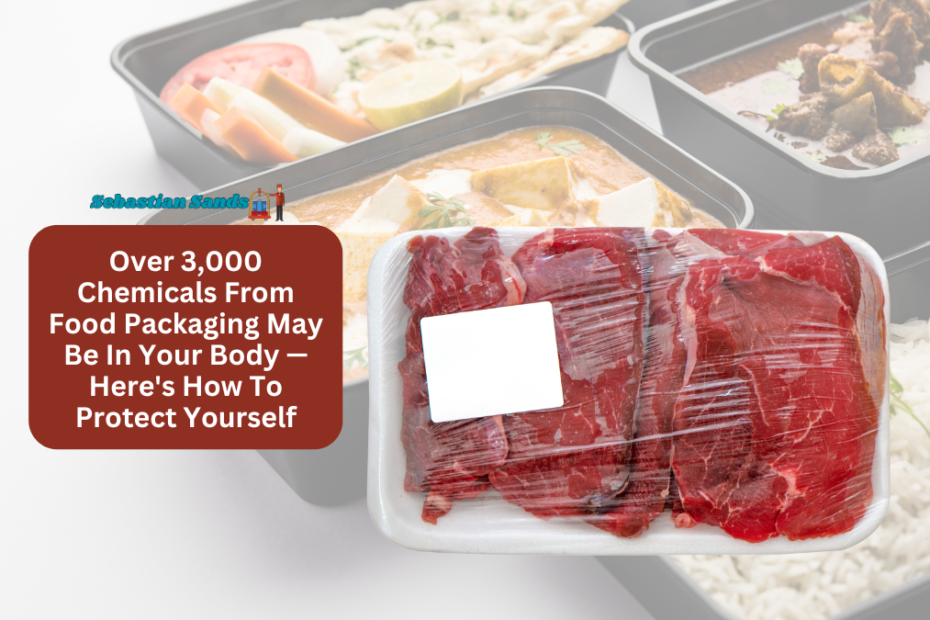A recent study has revealed that more than 3,600 chemicals from food packaging may have made their way into the human body. Out of the estimated 14,000 known food contact chemicals (FCCs), a significant portion could now be present in your system, raising concerns about potential health risks.
On Tuesday, researchers from Switzerland and other nations published their study titled “Evidence for widespread human exposure to food contact chemicals,” in the Journal of Exposure Science & Environmental Epidemiology.
The team analyzed known FCCs in relation to five biomonitoring programs and three metabolome/exposome databases. They discovered that 3,601 of these chemicals, or 25% of known FCCs, are found in humans. Alarmingly, 80 of these chemicals are classified as having “hazard properties of high concern.”
What Are Food Contact Chemicals (FCCs)?
FCCs are chemicals found in food packaging, storage containers, processing equipment, kitchenware, and tableware. According to the 2020 consensus statement “Impacts of food contact chemicals on human health,”
FCCs are defined as all chemical species present in food contact materials, regardless of whether they were added intentionally or for other reasons.
Read More : Michelin-Starred Chef Joins Maggiano’s To Elevate The Menu With New Dishes
Thousands of FCCs exist, but the recent study highlights metals and per- and polyfluoroalkyl substances (PFAS), also known as “forever” chemicals, which have made their way into the human body through food packaging.
How Harmful Are These Chemicals?
PFAS, which have been used in packaging for decades to resist oil, water, and stains, could pose serious health risks.
The Agency for Toxic Substances and Disease Registry (ATSDR) warns that PFAS exposure could lead to a range of health issues, including changes in cholesterol levels, liver enzyme fluctuations, reduced infant birth weight, and weakened immune system responses.
Dr. Jamie DeWitt, director of the Environmental Health Sciences Center at Oregon State University, explained that one of the primary concerns with PFAS exposure is the suppression of immune responses, particularly after receiving a vaccine.
Although the immunosuppressive effects are typically mild to moderate, this can increase the risk of infections and diseases like cancer.
How Can You Reduce Your Risk?
Reducing exposure to hazardous FCCs can help lower the risk of non-communicable diseases linked to chemical exposure. However, researchers caution that “toxicity data are often incomplete or missing,” making it difficult to assess the safety of these chemicals fully. Here are a few ways you can minimize your exposure:
- Avoid Microwaving Food in Takeout Containers
Heating food in packaging can cause chemicals to leach more quickly into your meal. Opt to transfer food into microwave-safe containers before reheating.
2. Be Mindful of Recycled Paper and Cardboard
According to the Washington Post, recycled paper, cardboard, and plastic are often the worst offenders, as they may contain non-food-grade ink and chemicals. While recycling is generally positive, these materials can add more harmful chemicals to your food.
3. Look for BPI-Certified Products
The Biodegradable Products Institute (BPI) certifies compostable food packaging as PFAS-free. Choosing BPI-certified packaging can help you avoid exposure to harmful chemicals.
4. Check the Center for Environmental Health Website
This resource provides an updated list of PFAS-free food packaging options, helping consumers make informed decisions when purchasing food and storage products.
Read More : Olive Garden Brings Back Two Fan-Favorite Dishes After Years Off the Menu
Advocate For Change
Besides taking care of yourself, people in the U.S. can also get involved in speaking up for what they believe in.
The FDA is having a meeting on September 25, 2024, to talk about how they evaluate chemicals in food after it’s already on the market. You can ask questions and help influence the rules for these chemicals.
Even though you can’t completely avoid food contact chemicals, you can lower your risk by learning more about them and making little changes in how you handle and pick your food packaging.
